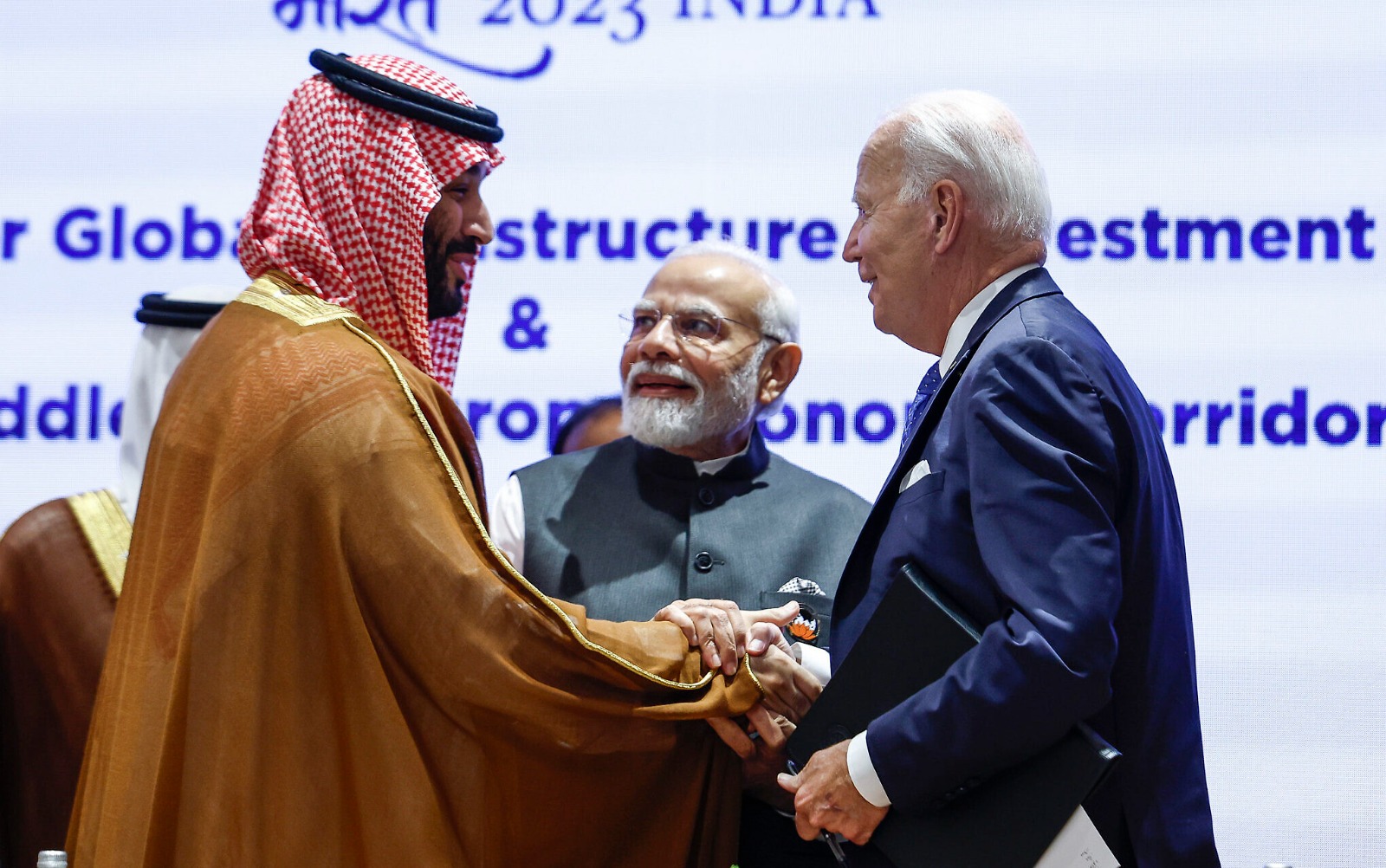In a move that promises to reshape the geopolitical landscape of trade and connectivity, the United States and the European Union have thrown their support behind a groundbreaking initiative to establish a new transport corridor connecting India to the Middle East and the Mediterranean Sea. This ambitious project, conceived as a direct challenge to China’s expanding economic influence in the Arab states, was unveiled during the G20 summit held in New Delhi. Leaders from across the globe, including US President Joe Biden, Indian Prime Minister Narendra Modi, and Saudi Crown Prince Mohammed bin Salman, came together to endorse this strategic endeavor, symbolizing a united front against China’s economic clout. This article explores the details of this historic agreement, its potential implications, and its significance in countering China’s Belt and Road Initiative.
Historic Agreement on the Sidelines of G20 Summit
The memorandum of understanding that paves the way for the new transport corridor was signed on the sidelines of the G20 summit, marking a significant step towards its realization. The proposed corridor’s extensive route spans the Arabian Sea, connecting India to the United Arab Emirates before traversing Saudi Arabia, Jordan, and Israel, ultimately linking up with Europe. This extensive network is not limited to railways and shipping but also includes plans for a new undersea cable and energy transport infrastructure. While these discussions have been ongoing behind the scenes for several months, leaders have now committed to formalizing their intentions. Although no binding financial commitments have been made, the parties have agreed to develop a comprehensive “action plan” over the next 60 days, ensuring that this initiative progresses from vision to reality.
A Countermeasure Against Growing Chinese Influence
President Biden highlighted the myriad possibilities that this corridor offers to the nations involved. He emphasized its potential to facilitate trade and the export of clean energy, as well as the establishment of critical communication infrastructure. This project is poised to contribute to a more stable and prosperous Middle East, Biden asserted. European Commission President Ursula von der Leyen also lauded the initiative, underlining its potential to significantly expedite trade between India and Europe, making it 40 percent faster, thanks to the rail link. For the US, this initiative serves as a strategic countermeasure against China’s burgeoning influence in the region, particularly as traditional Arab partners such as the UAE and Saudi Arabia strengthen their ties with China and other Asian powers.
The corridor’s path through Jordan and Israel also aligns with the Biden administration’s efforts to build upon recent diplomatic progress in the region. By connecting Israel and several Arab states, this project may encourage Saudi Arabia to formalize ties, contributing to broader regional stability and cooperation. Jake Sullivan, the US national security adviser, clarified that this project is not a direct precursor to normalization talks between Israel and Saudi Arabia. Instead, it represents a joint commitment to regional integration and practical benefits.
EU Joins Forces to Deepen Trade and Investment Ties in the Gulf
The European Union’s role in this groundbreaking agreement was solidified during a visit by President Ursula von der Leyen to Abu Dhabi, where she engaged in discussions with UAE President Sheikh Mohammed bin Zayed al-Nahyan. This collaboration forms a pivotal aspect of the EU’s strategy to strengthen trade and investment ties with Gulf countries, particularly in response to Russia’s ongoing conflict with Ukraine. Under the Global Gateway project, the EU has allocated significant funds of up to €300 billion for overseas infrastructure investments between 2021 and 2027. This initiative is part of the EU’s broader efforts to rival China’s Belt and Road Initiative and safeguard European interests in key trade partners.















